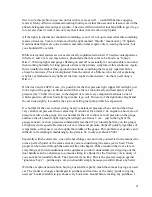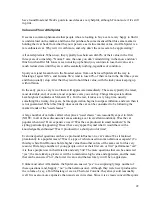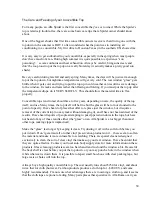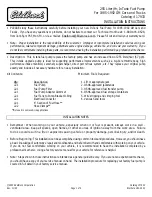
15
termed "variatore de fase" by the Italian engineers. This was promptly renamed "the phaser" by
the Americans involved with the team, and the name stuck.
At first only used as an emissions control device, later versions allowed improved cam timing,
giving better performance at high RPM but allowing controlled emissions at idle. I believe it was
the only production car available in the US (perhaps anywhere) with such an advanced system
until well into the
…
90s. FIAT has rediscovered this device and now fits it to several of its own
engine designs. (special thanks to BD for information on the VVT system)
One gets the impression at this time of a company quite concerned with its convertible sports car,
but seemingly unwilling or (more likely) unable to create a new car that would have incorporated
the radically changed requirements of an automobile in the "emissions controlled" era from the
outset. However, if you wanted a quick, small, two seat convertible sports car, Alfa was pretty
much the only game in town. The Series 3 cars sold quite well, and are probably the most
common Spider on the road today.
Series 4
After a serious upheaval at the company that lead to its being purchased by FIAT, the 115 Spider
went through its next, and what would prove to be last, major body revision in 1991.
Perhaps because of the influx of FIAT's cash, the Series 4 cars represent the most significant
body redesign since the Kamm-tail premiered in the Series 2 cars. Pininfarina, the design firm
that created the original Duetto some 25 years earlier, really went all out to make this revision
work.
Bumper integration (always a sore spot with the cars going back, in the US, more than twenty
years) was nothing short of wonderful. In front the inverted triangle grille that is an Alfa styling
trademark reappeared, again for the first time since the Series 2 cars. The front "chin" spoiler was
also redesigned, making it better integrated and more subdued than in previous cars. The "side
skirts" were integrated and made part of the sheet metal rather than being "tacked on" as in the
Series 3 Quadrifoglio cars. In the rear, the oft-cursed "duck tail" was eliminated completely,
replaced by a subtle re-curving of the entire rear body shell, which now formed the rear spoiler.
As with the Series 3 cars, rear bumper integration was especially good, and all bumpers were
now body-colored, rather than black-and-silver plastic as in Series 3.
Performance continued to be enhanced, and I believe in 1992 the rated output of the 2.0L engine
finally matched its 1973-1974 peak of 129 hp. Unfortunately, all the neat body integration came
at the cost of added weight, and, coupled with new US safety laws, this caused the car to reach its
all time weight level, coming in at slightly over 2500 lbs.
The ultimate result was a car whose performance was pretty much staying steady with the mid-
…
80s Series 3 cars (i.e. fun but nothing a Ford Probe or Honda CRX Si couldn't handle). The
suspensions of the cars never changed much through the entire run, and handling was improved
mostly through increased tire performance. Power steering was introduced in 1991. An automatic
















































